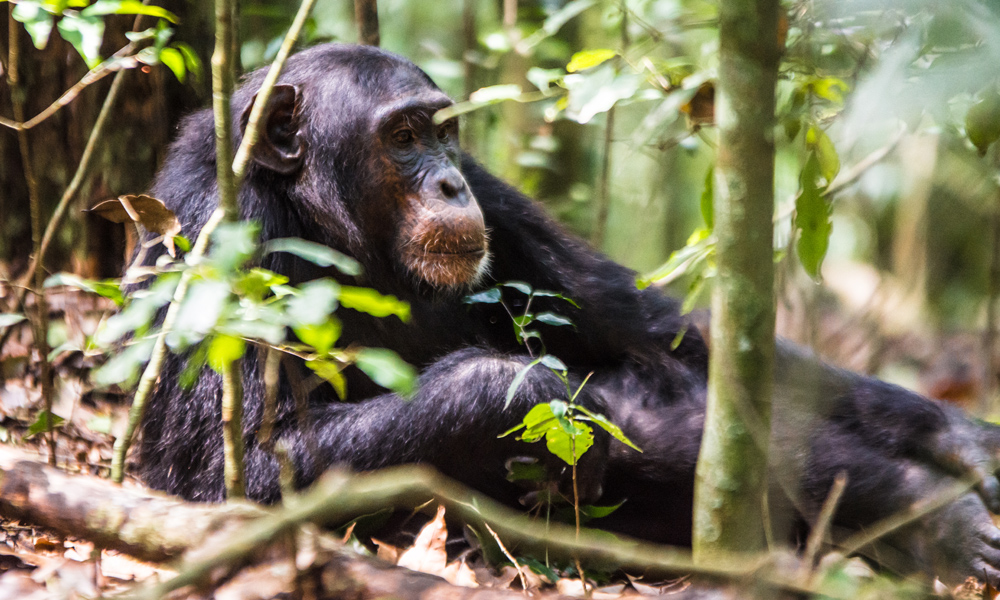The primary reason for most visitors to Rwanda is to witness some of the 320 mountain gorillas living there. The nation introduced chimpanzee tracking in Nyungwe National Park to boost diversity and accommodate tourists interested in longer safaris. This allows guests to experience a full primate safari, giving them the chance to see fourteen different kinds of primates.
One of Rwanda’s most well-liked tourist spots is Nyungwe National Park. The forests of Nyungwe and Cyamudongo make up the park. 13 kinds of primates, 85 animal species, more than 1000 plant species, 275 known bird species, butterflies, moths, and reptiles can all be found at Nyungwe National Park. One of Africa’s oldest Afro-montane forests is found in the park. It extends all the way to the Burundian and Congolese borders. The vast Congo River and the rivers that surround the Nile Basin are supplied by the Nyungwe Forest, which serves as a water catchment area. Even with the park’s abundance of species, the chimpanzees remain the main draw, with forest canopy tours coming in second. Thousands of tourists visit the park each year in hopes of seeing these incredible monkeys in their natural habitat.

More so than gorillas, chimpanzees are the closest living relatives of humans. The immune system, neurological system, circulatory system, and digestive system are all comparable in terms of DNA. With the exception of humans, chimpanzees have brains that are more developed than any other animals. Chimpanzees can be compassionate towards one another and can employ instruments to help them in their daily lives.
At the park headquarters, there is an orientation before beginning chimpanzee trekking in Nyungwe Forest National Park. To attend the briefing, all visitors must congregate at the park headquarters early in the morning. Information on the park, the animals in the forest, and proper behaviour around the chimps will be discussed by park staff. Following the briefing, visitors will be paired with chimpanzee communities in either the main Nyungwe Forest or the Cyamudongo Forest. Then, in pursuit of the primates, the Rangers will bring visitors into the jungle. While pursuing the chimpanzees, there is plenty to observe in the jungle. There are twelve more species of primates in Nyungwe Forest, as we have already discussed. They include silver monkeys, grey cheeked mangabey, olive baboons, dent’s monkey, L’hoest monkeys, Angolan colobus, mona monkeys, Ruwenzori monkey, vervet monkey, golden monkeys, red-tailed monkeys and halmyn’s monkeys. Apart from the smaller primates, there is the unique vegetation, butterflies, forest mammals and waterfalls to see.
The rainy season is the ideal time to go chimpanzee trekking in Rwanda. Because there is an abundance of food during the wet season, monkeys tend to congregate in one area, posing unique obstacles for trackers. Because there is less food available during the dry season, the chimps venture further into the forest in quest of fruits or nourishment. It may take up to four hours to locate them if you have to follow them far into the forest for this. Additionally, a few unlucky travellers may not see them at all during the dry season.
As you have already seen by now, there is not a 100% possibility of sighting chimpanzees in Nyungwe Forest. This is due to their propensity to travel far into the expansive forest in quest of food during specific months of the year. It is not a given that you will see the primates every time. But thanks to technology and a group of advance trackers dispatched to locate them before daybreak, there is a 90% probability of spotting them. In the Cyamudongo Forest, there is a 90% probability of spotting them, which is quite good. This is due to the fact that Cyamudongo Forest is surrounded by farms and communities and is isolated from the main Nyungwe Forest. The chimps there usually stay on this wooded island.
In Rwanda, chimpanzee tracking requires a minimum tracking age of 13 years. Because of the deep montane forest, trackers must come prepared. When going chimpanzee trekking in Nyungwe Forest, it’s a good idea to carry items like raincoats, sturdy hiking boots, long-sleeved clothing, a helmet or cap, insect repellents, a professional camera, drinks, and dry food. Make sure to hire a porter to handle any big bags or cameras you intend to transport.
